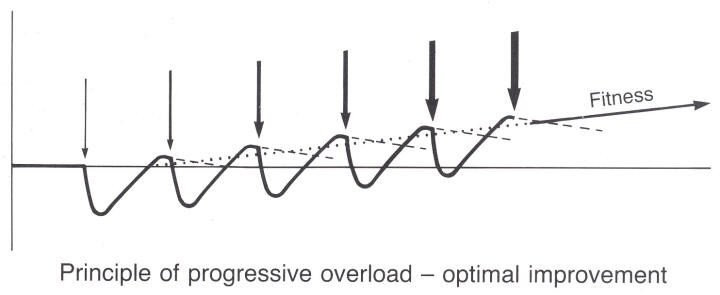This was originally posted on reddit’s /r/bodyweightfitness and now updated.
I realized the FAQ doesn’t really explain this concept in depth, and there are a lot of new people on this subreddit. Thus, I figured I would introduce one of the basic concepts on why training is highly systematic. There are several reasons why you want to stick with the same exercises and progress with them.
First, You may have heard the term “muscle confusion” where you constantly switch up your exercises to confuse the muscle so that you get bigger and stronger. It’s BS marketing. Ignore it.
The reason why there is one recommended routine as opposed to a split or infinite variation such as crossfit is intentional and important. And if you look at most competitive CFers they rarely do random workouts anyway. There is a scheduled and systematic method to the madness. That reason is based on the strength equation.
- Strength = neural adaptations * cross sectional area of muscle
Let me explain this equation.
1. Cross sectional area of muscle is simple: muscle hypertrophy
2. Neural adaptations include factors such as rate coding (firing rate of muscles), muscle recruitment, muscle synchronization (intra-muscular coordination), contribution (inter-muscular coordination), antagonist inhibition, motor learning
Second, some of these neural adaptations are non-specific. That is they apply broadly. For example, doing dips will give you the strength to do pushups because the body learns how to recruit and synchronize muscle fibers as well as increase the firing rate.
However, some of these neural adaptations are specific. For example, contribution and motor learning. You may have heard the term that “strength is a skill” before. That is true. The more you practice an exercise the better you will get at it in both quality of movement and strength.
For instance, if you can bodyweight squat 10 times a in row your weighted back squat may be mediocre. But if you can bodyweight squat 100 times in a row while your weighted back squat may not be as good as if you did weighted back squats, but you would definitely be able to weighted back squat more than someone who can only do 10 reps of bodyweight. A personal example is myself. I never thought about trying weighted dips until I could do 30 dips in a row. Once I did weighted dips, I could do 90 pounds for 5 reps.
Third, now that we understand the basic concepts, why do we do the same exercises over and over?
I explained it in terms of strength being specific. Thus, training a specific movement over and over allows you to improve at it significantly. When you systematically improve on one particular exercise this is called progressive overload. Progressive overload does not simply have benefits for strength but also hypertrophy.
If you go to any gym or watch people workout, you’ll notice that the people who are the strongest are usually also the biggest. This is no surprise given the strength equation. Hence, the way you train both at once is through progressive overload principles. You are improving on specific strength by doing an exercise frequently (specific factors), AND you are improve on strength and hypertrophy by increase the intensity by moving up in progressions, reps, and/or volume (non-specific factors and progressively overloading the muscles).
Therefore, if your goals are strength and hypertrophy, switching up your exercises often is a bad idea. Stick with the same exercises and progressive overload. This is why most beginner full body routines have all of the same or similar exercises. They are the best bang for your buck to progressively overload. This is why training is typically very highly systematic and planned.
The end.
edit: since there has been some confusion, this post is mainly meant for beginners to be used in full body routines. If you’re past the beginner stage and/or using a split there is more room for isolation work and changing exercises around to hit specific weaknesses. Generally, you still don’t switch up exercises much in this phase and use them to shore up weak points.
Overcoming Gravity 2nd Edition talks about this in way more detail.
Original post. Cover image from http://www.wellbuiltstyle.com/
Author: Steven Low
Steven Low is the author of Overcoming Gravity: A Systematic Approach to Gymnastics and Bodyweight Strength (Second Edition), Overcoming Poor Posture, Overcoming Tendonitis, and Overcoming Gravity Advanced Programming. He is a former gymnast who has performed with and coached the exhibitional gymnastics troupe, Gymkana. Steven has a Bachelor of Science in Biochemistry from the University of Maryland College Park, and his Doctorate of Physical Therapy from the University of Maryland Baltimore. Steven is a Senior trainer for Dragon Door’s Progressive Calisthenics Certification (PCC). He has also spent thousands of hours independently researching the scientific foundations of health, fitness and nutrition and is able to provide many insights into practical care for injuries. His training is varied and intense with a focus on gymnastics, parkour, rock climbing, and sprinting. Digital copies of the books are available in the store.
